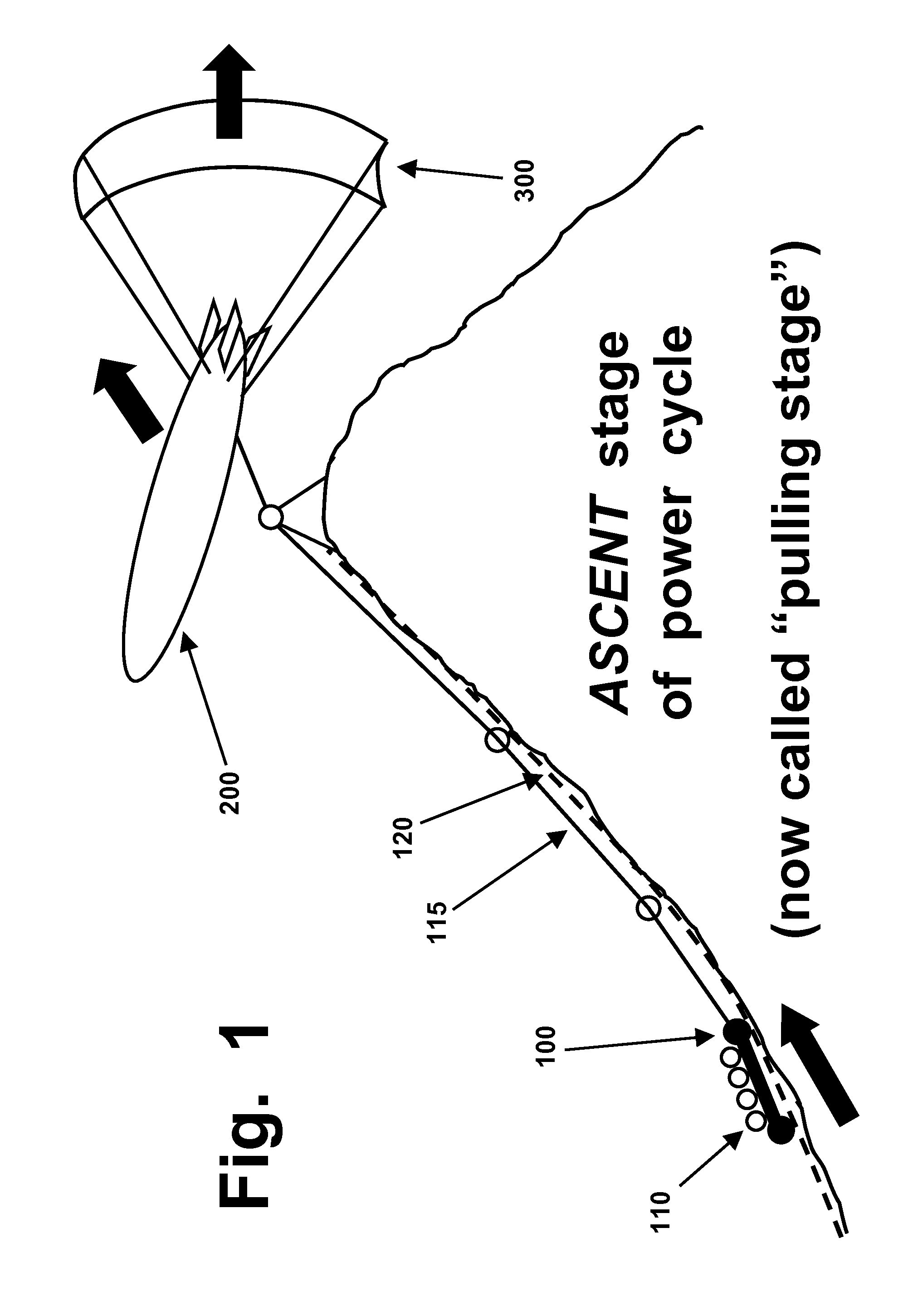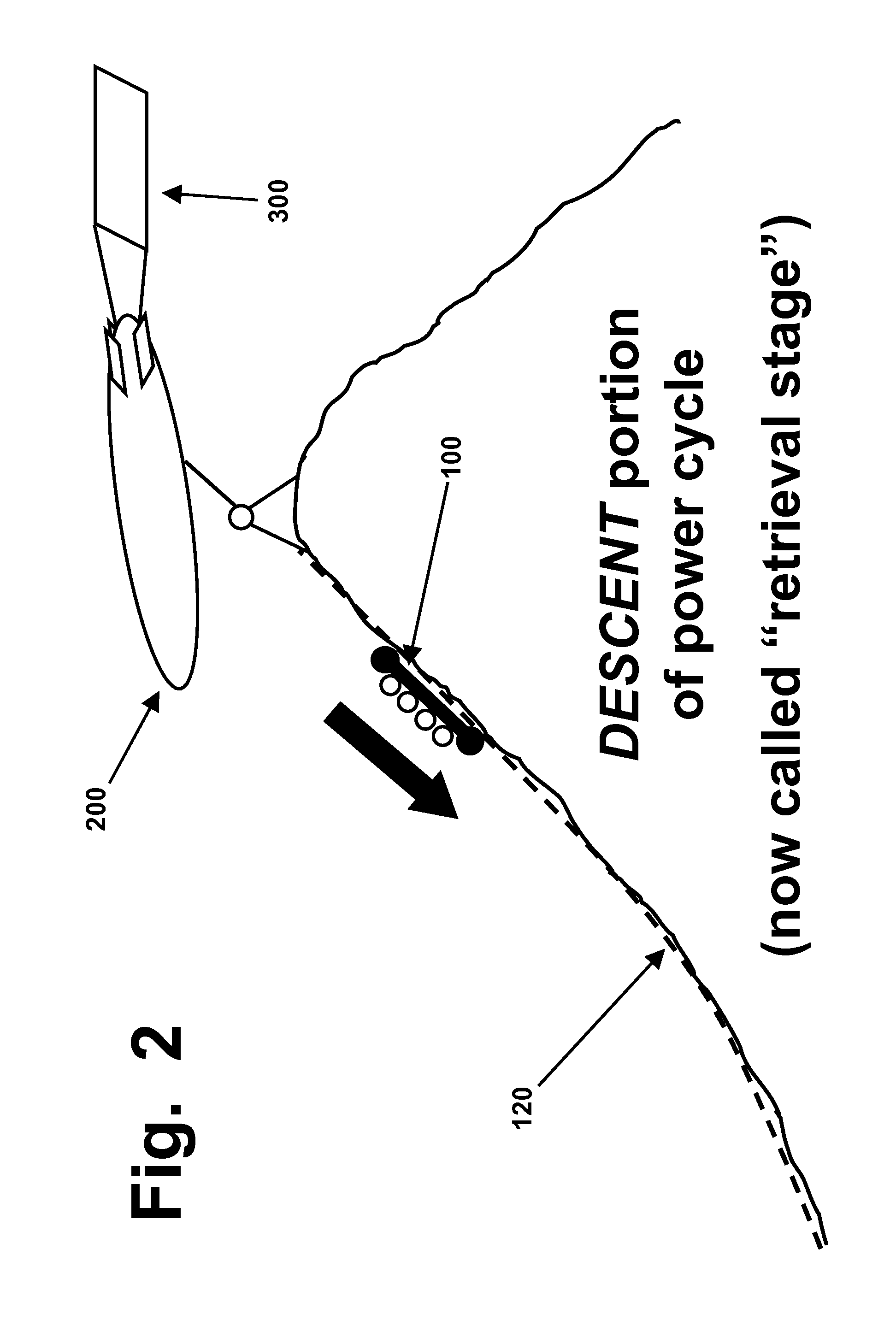Spinnaker sails from interwoven straps for generating electric power from wind
a technology of interwoven straps and spinnaker sails, which is applied in the direction of wind motors, motors, machines/engines, etc., can solve the problems of low permeability to air flow, high wind speed, and inability to withstand wind, so as to achieve large mechanical pulling forces
- Summary
- Abstract
- Description
- Claims
- Application Information
AI Technical Summary
Benefits of technology
Problems solved by technology
Method used
Image
Examples
Embodiment Construction
[0092]To ensure that the “disclosure of the best mode” requirement is fully satisfied, the entire discussion below is identical to the “Detailed Description” section in simultaneously-filed U.S. application Ser. No. 13 / 217,873. The section below which is directly pertinent to the “webbing sail” invention claimed herein is in a section below which is entitled, “WEBBING (OR WEB) SAILS”, and in FIGS. 20 and 21.
[0093]As briefly summarized above, this application discloses devices and methods that are designed to generate electric power, by capturing (or harvesting, converting, or similar terms) wind energy. One such device disclosed herein is an airborne traveling assembly referred to herein as an“airbarge and sail” unit (or system, assembly, etc.). It uses an airbarge (i.e., a wide and flat lifting device which will be unmanned during normal use), which is buoyant (i.e., filled with enough hydrogen or helium to overcome the weight of both the airbarge and the sail, in a manner which ge...
PUM
 Login to View More
Login to View More Abstract
Description
Claims
Application Information
 Login to View More
Login to View More - R&D
- Intellectual Property
- Life Sciences
- Materials
- Tech Scout
- Unparalleled Data Quality
- Higher Quality Content
- 60% Fewer Hallucinations
Browse by: Latest US Patents, China's latest patents, Technical Efficacy Thesaurus, Application Domain, Technology Topic, Popular Technical Reports.
© 2025 PatSnap. All rights reserved.Legal|Privacy policy|Modern Slavery Act Transparency Statement|Sitemap|About US| Contact US: help@patsnap.com



